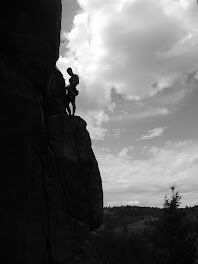With somewhat of a researchers background I am motivated to try to define the study of the photographs and other images that I possess. It seems to me that being able to define such a study in acceptable research terms would give it more credibility. With that aim in mind I came across the term “visual culture.”
Visual culture is defined in various ways:
According to Nicholas Mirzoeff' is perhaps best understood as a tactic for studying the functions of a world addressed through pictures, images, and visualizations, rather than through texts and words. Here is a link to an article by Mirzoeff on
visual culture.
Another term that came up during my search for meaning is semiotics: According to Daniel Chandler in his
online book on the subject:
Semiotics represents a range of studies in art, literature, anthropology and the mass media rather than an independent academic discipline. Those involved in semiotics include linguists, philosophers, psychologists, sociologists, anthropologists, literary, aesthetic and media theorists, psychoanalysts and educationalists. Beyond the most basic definition, there is considerable variation amongst leading semioticians as to what semiotics involves. It is not only concerned with (intentional) communication but also with our ascription of significance to anything in the world.
I questioned whether this is the appropriate method as it seems that semiotics would be more the study of language and text however it is also defined as follows:
Semiotics provides us with a potentially unifying conceptual framework and a set of methods and terms for use across the full range of signifying practices, which include gesture, posture, dress, writing, speech, photography, film, television and radio. Semiotics may not itself be a discipline but it is at least a focus of enquiry, with a central concern for meaning-making practices which conventional academic disciplines treat as peripheral. Here is a link
to an article by Irit Krygier, that provides photography with a definiton in todays digital age.
One could argue that I cannot do an adequate study of the photographs I possess unless I understand the intent of the photographer. What is the context of the photo being taken? Was it vacation, for a study, for a business reason…this anonymous collection of photographs may not provide worthwhile data in that regard. These photos are an expression of human life, the way we live, and how we capture on film and what we deem important. Reviewing hundreds if not thousands of photos of home life, vacations, landscapes, and celebrations provides a rich in-depth study of life in the United States but through travels abroad.
I am currently review several photographs of a travelers experience in Russia. These photos were probably taken in the 1950’s and are actually slides:










Not sure where these photos were taken:




I can put pictures that other people take and study them in the context of what motivates or inspires me to take pictures:

I love to take pictures of old farm buildings, abandoned farms and capture these symbols of a fading way of life.

The above photo was taken in Silverton, CO at the Durango/Silverton Train.

The above is a photo of ruins in Mesa Verde. To me this is somewhat symbolic of how we capture other cultures through photography.

Another abandoned farm picture.

Sinclair, WY I believe..a semi abandoned town with an
interesting history.

We spent the night in a Hostel in Grand Junction. I thought I would be uncomfortable in the postage stamp sized room but I immediately fell asleep. The picture above is of the lobby, lounge space at the hostel.

On the Durango/Silverton train.
If I were to do a post like this every week for the next five years I doubt that I would get through my collection of photos, one which I continue to add to either via scanning or my own photos. It is a fascinating study for me. I am struggling with how to define or frame this study and analysis. Knowing that will help me a great deal to identify the context in which to place this analysis.































